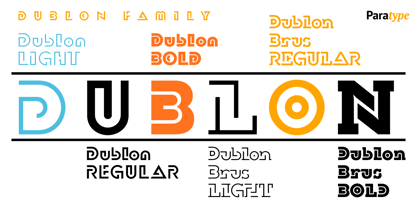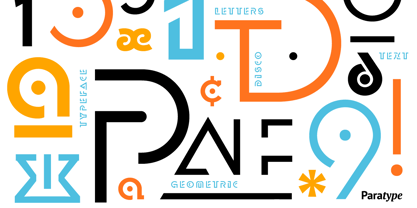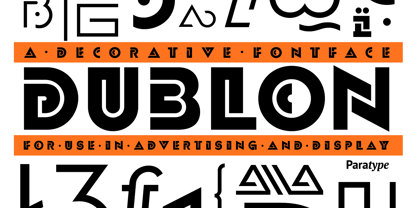Sélectionnez ce type de licence lorsque vous développez une application pour iOS, Android ou Windows Phone et que vous intégrez le fichier de fonte dans le code de votre application mobile.
Dublon
par ParaType




- AaGlyphs
-
Meilleure offreOffres familiales
- Styles individuels
- Spécifications techniques
- Licences
Par style :
$27.00
Paquet de 3 styles :
$81.00
À propos de la famille Dublon Police
Le caractère a été conçu pour ParaType (ParaGraph) en 1994 par Oleg Karpinsky sur la base de son dessin original. Un caractère décoratif dans le style Op-Art. Il est destiné à la publicité et à la typographie d'affichage.
Concepteurs : Oleg Karpinsky
Éditeur : ParaType
Fonderie : ParaType
Maître d'ouvrage : ParaType
MyFonts débout : 8 décembre 2003
À propos ParaType
Paratype conçoit, développe et distribue le site polices depuis les années 1980. Notre bibliothèque de centaines de caractères, qui ne cesse de s'enrichir, comprend certains des caractères les plus utilisés polices, tels que PT Sans/Serif Pro, Futura PT, DIN 2014, Circe, Vast et Fact. Paratype polices dispose d'un support linguistique étendu couvrant les caractères latins, cyrilliques et grecs. Nous créons également des polices personnalisés et fournissons des police services de mastering et de logiciels.
En savoir plus
Lire moins